PROBLEM STATEMENT
In today’s world, where information overload can desensitize us to the plights around us, social films emerge as a beacon of hope, illuminating the dark corners of society with the power of narrative storytelling. These films go beyond entertainment; they are a vital medium of communication that has the unparalleled ability to connect emotionally and intellectually with audiences. Through the lens of filmmakers, social issues are transformed into compelling stories that can move people to tears, provoke anger, inspire compassion, and, most importantly, drive change.
The influence of social films extends far beyond the momentary engagement with their narratives. They have a profound capacity to shape and shift public opinion, turning abstract issues into tangible human stories that viewers can relate to and understand on a deeper level. This transformation of perception is not just about making viewers aware of the issues; it’s about presenting these challenges in a manner that resonates, making the abstract personal, and the distant immediate.
Moreover, social films elevate the visibility of various social, political, and environmental issues by presenting them in a narrative format that’s not only accessible but deeply persuasive. This accessibility is crucial in a world where complexity often leads to apathy. By distilling complex issues into narratives that capture the essence of human struggles, social films make it easier for the public to grasp and engage with these problems.
Social films also serve as a catalyst for discussions and actions, bridging the gap between awareness and action. They not only spotlight issues but also propose pathways for change, encouraging viewers to think critically about their role in society and how they can contribute to the solution. This aspect of social filmmaking is critical in mobilizing public attention and resources towards addressing the challenges depicted in these narratives.
Finally, the transformative power of social films lies in their ability to not just reflect reality but to actively change it. By drawing public attention to underrepresented or misunderstood issues, these films can mobilize collective efforts, rallying support from communities, policymakers, and activists. In essence, social films are a form of activism in their own right, using the power of storytelling to advocate for change and inspire a movement towards a more aware, empathetic, and proactive society.
Key POINTS
- Social films transcend traditional media, offering a unique blend of emotional engagement and intellectual stimulation.
- They possess the profound capability to reshape public opinion by making complex issues relatable and understandable.
- By making social issues accessible and compelling, social films significantly enhance public awareness and understanding.
- These narratives act as catalysts for discussion and action, effectively bridging the gap between awareness and societal change.
- Social films are not passive reflections of reality; they are active agents of change, mobilizing public attention and resources to address critical societal issues.
PROJECT GOALS
The primary mission of “Cinematic activism” is to harness the transformative power of social films to enlighten and mobilize society. We aim to achieve a multi-faceted impact, centered around the following core objectives:
awareness of social issues – at the heart of our project lies the goal to significantly elevate the level of awareness regarding social issues. Through compelling narratives, we intend to shine a light on the myriad challenges faced by communities across the globe. By making these issues more visible and understandable to a broad audience, we hope to foster a more empathetic and informed society/
shaping and changing public opinion – we believe that social films have the unique ability to not only inform but also influence opinions and attitudes towards critical social issues. Our project aims to leverage this medium to mold and, where necessary, alter public opinion to be more conducive to social justice and equity.
stimulating public discussions and actions – beyond raising awareness and shaping opinions, a fundamental goal of our initiative is to ignite public discussions and spur individuals and communities into action. We envision creating a ripple effect, where engagement with social films leads to meaningful conversations and, ultimately, concerted efforts to address the issues they highlight.
expanding access to social films – recognizing that access to these powerful stories is often limited by economic, geographical, or societal barriers, our project commits to broadening access to social films. By making these films more accessible, we aim to democratize the power of cinematic storytelling, ensuring that diverse voices are heard and that the messages of social films reach as wide an audience as possible.
fostering empathy and understanding – a crucial objective of our initiative is to cultivate empathy and understanding among viewers towards the individuals and communities depicted in social films. By presenting stories from diverse perspectives, we aim to bridge cultural and social divides, encouraging a more empathetic and inclusive society.
Key POINTS
- Elevating awareness of social issues through the compelling medium of film.
- Utilizing social films to shape and positively change public opinion towards a more just society.
- Fostering public discussions and actions aimed at tackling the highlighted social issues.
- Democratizing access to social films to ensure their transformative messages reach diverse audiences.
This ambitious set of goals reflects our commitment to not just showcase social issues through film but to actively engage and mobilize society towards creating tangible change.
IMPLEMENTATION METHODS
To ensure the successful implementation of the Cinematic Activism: A Funding Drive for Social Films program, we will utilize the following methods:
- collaboration with educational institutions – we will establish partnerships with schools and universities to showcase social films to students. This initiative will provide young people with the opportunity to learn about various social issues and foster the development of critical thinking skills.
- partnership with psychologists – we will engage professional psychologists to assess films before they are shown to children and adolescents. This ensures that the content is presented in a manner appropriate to the age and psychological resilience of the audience.
- digital campaigns and social media – through the use of digital marketing and social media, we aim to promote social films and the overall program. Organizing webinars, online festivals, and social media campaigns will significantly broaden our audience and enhance engagement.
- collaboration with NGOs and humanitarian organizations – artnering with NGOs and humanitarian organizations working on the social issues highlighted in the films. Such collaborations can provide additional platforms for film screenings and facilitate the implementation of specific initiatives and projects.
- public screenings and discussions – onducting open screenings of social films followed by discussions and workshops, where viewers can meet filmmakers, experts, and activists. This promotes a deep understanding of the themes and an exchange of ideas.
These implementation methods are designed to create a sustainable and effective program capable of making a significant impact on society through the power of cinematic activism.
IMPLEMENTATION PHASES
Film Theme Selection & Problem Analysis
The first step involves selecting a theme for the film by analyzing the relevance and urgency of social issues. This ensures the film’s topic is timely and resonates with current societal challenges.
Team Formation
Assembling a dedicated team is crucial for the project’s success. This team will comprise filmmakers, writers, psychologists, and marketing specialists, each bringing unique skills and perspectives to the project.
Scriptwriting and Development
The creative process begins with writing scripts and developing narratives that compellingly address the chosen theme. This stage is foundational in shaping the film’s message and impact.
Psychological Analysis of the Theme and Script
Before proceeding to production, a professional psychologist evaluates the theme and script to ensure the content is appropriate and impactful for the intended audience, considering psychological effects and age-appropriateness.
Filming
With the script and psychological assessment complete, the next phase is the actual filming. This stage brings the written narrative to life, capturing the visual and emotional essence of the story.
Formation of Strategic Partnerships
Creating partnerships with educational institutions, NGOs, and other organizations is vital. These alliances facilitate wider distribution and engagement, enhancing the film’s reach and impact.
Launching Digital Campaigns and Social Media Initiatives
Digital marketing and social media campaigns are launched to promote the film and engage with a broader audience. These campaigns are essential for building anticipation and ensuring a successful film release.
Screenings in Educational Institutions
Screenings are organized within schools and universities to educate students on the film’s social issues. This integrates the film into educational settings, prompting discussion and critical thinking.
Distribution and Screenings through Partner Organizations
Collaborating with partner organizations, the film is distributed and screened across various platforms and communities, maximizing its visibility and impact.
Organizing Public Screenings
Public screenings are organized to bring the film to a wider audience, creating opportunities for community engagement and discussion on the film’s themes.
Feedback Collection and Impact Assessment
Finally, feedback is collected from audiences and partners, and the impact of the film and its associated activities is assessed. This feedback informs future projects and strategies, ensuring continuous improvement and greater impact in subsequent initiatives.
These stages outline a comprehensive approach to the Cinematic Activism program, ensuring that from concept to feedback, each phase is executed with intention and aims to maximize the film’s societal impact.
OUR EXPERIENCE
Our foundation brings a wealth of experience in creating impactful visual content aimed at fostering social integration and awareness. Our journey began with the production of a short integration film that shed light on the plight of refugees arriving in Poland. This project was more than a film; it was a bridge connecting diverse cultures, highlighting the exchange of cultural traditions, and addressing the social isolation faced by elderly refugees. It underscored the critical need for integration programs that cater to both children and adults, facilitating a smoother transition into new communities.
In addition to our integration film, we have produced a series of short social clips focusing on a range of pertinent issues. Among these, we have delved into the rights of children as outlined in the Convention on the Rights of the Child. Recognizing the challenges faced by refugees in navigating a new job market, we also created an informational clip to guide refugees through the employment opportunities in Poland, offering insights into job search strategies and the related legislation.
Our approach to disseminating these films and clips has been multifaceted. We have organized public screenings to bring these stories to a wider audience, leveraging the power of cinema to foster empathy and understanding. Social media and digital platforms have been pivotal in expanding our reach, allowing us to connect with viewers across the globe. Furthermore, our collaborations with various organizations have enabled us to amplify our message, ensuring that our content not only informs but also inspires action.
Through these endeavors, we have not only contributed to the discourse on social issues but also demonstrated the profound impact of cinematic storytelling in driving social change. Our experience underscores our commitment to leveraging film as a medium to address societal challenges, promote cultural exchange, and advocate for the rights and integration of vulnerable communities.
FUNDS ALLOCATION
Ensuring the impactful use of resources is at the heart of our Cinematic Activism program. Our approach to fund allocation is designed to maximize the efficacy and reach of our initiatives, ensuring that every dollar contributes to meaningful change. Here’s how we plan to distribute the resources:
Production and Development
A significant portion of our funds is dedicated to the production and development of social films and clips. This includes everything from scriptwriting and filming to post-production processes. By investing in high-quality storytelling, we aim to create compelling content that resonates with audiences and stimulates dialogue on social issues.
Psychological Assessment
Understanding the impact of our content on diverse audiences is crucial. Funds are allocated for professional psychologists to evaluate the films and clips, ensuring they are appropriate for viewers of all ages and effectively convey the intended messages without causing distress.
Educational Outreach
We’re committed to integrating our films into educational curricula and organizing screenings in schools and universities. Allocating funds for educational outreach allows us to foster a deeper understanding of social issues among the younger generation, promoting empathy and proactive engagement.
Digital Marketing and Social Media Campaigns
To reach a wider audience and engage with communities globally, a portion of our budget is reserved for digital marketing and social media campaigns. This ensures our content gains visibility and traction, driving awareness and participation across various platforms.
Collaborations and Partnerships
Building strong relationships with NGOs, humanitarian organizations, and educational institutions is key to amplifying our impact. Funds are used to establish and maintain these partnerships, facilitating screenings, discussions, and joint initiatives that further our cause.
Public Screenings and Community Engagement
Organizing public screenings and interactive discussions is vital for community engagement. Allocating resources to these activities enables us to bring people together, fostering a communal understanding of the issues and encouraging collective action.
Feedback Collection and Impact Assessment
To continuously improve our programs, resources are dedicated to gathering feedback and assessing the impact of our films. This feedback loop helps us refine our approach, ensuring our future projects are even more impactful.
Our fund allocation strategy is designed with transparency and accountability at its core. We believe that by judiciously distributing resources across these critical areas, we can foster significant social change and contribute to a more empathetic and understanding world through the power of cinematic activism.
Notice: Test mode is enabled. While in test mode no live donations are processed.





